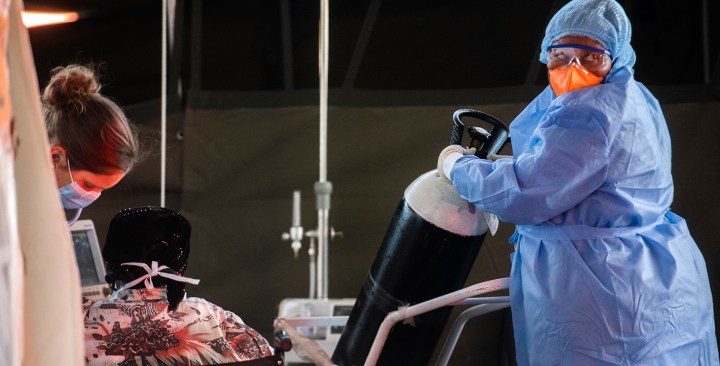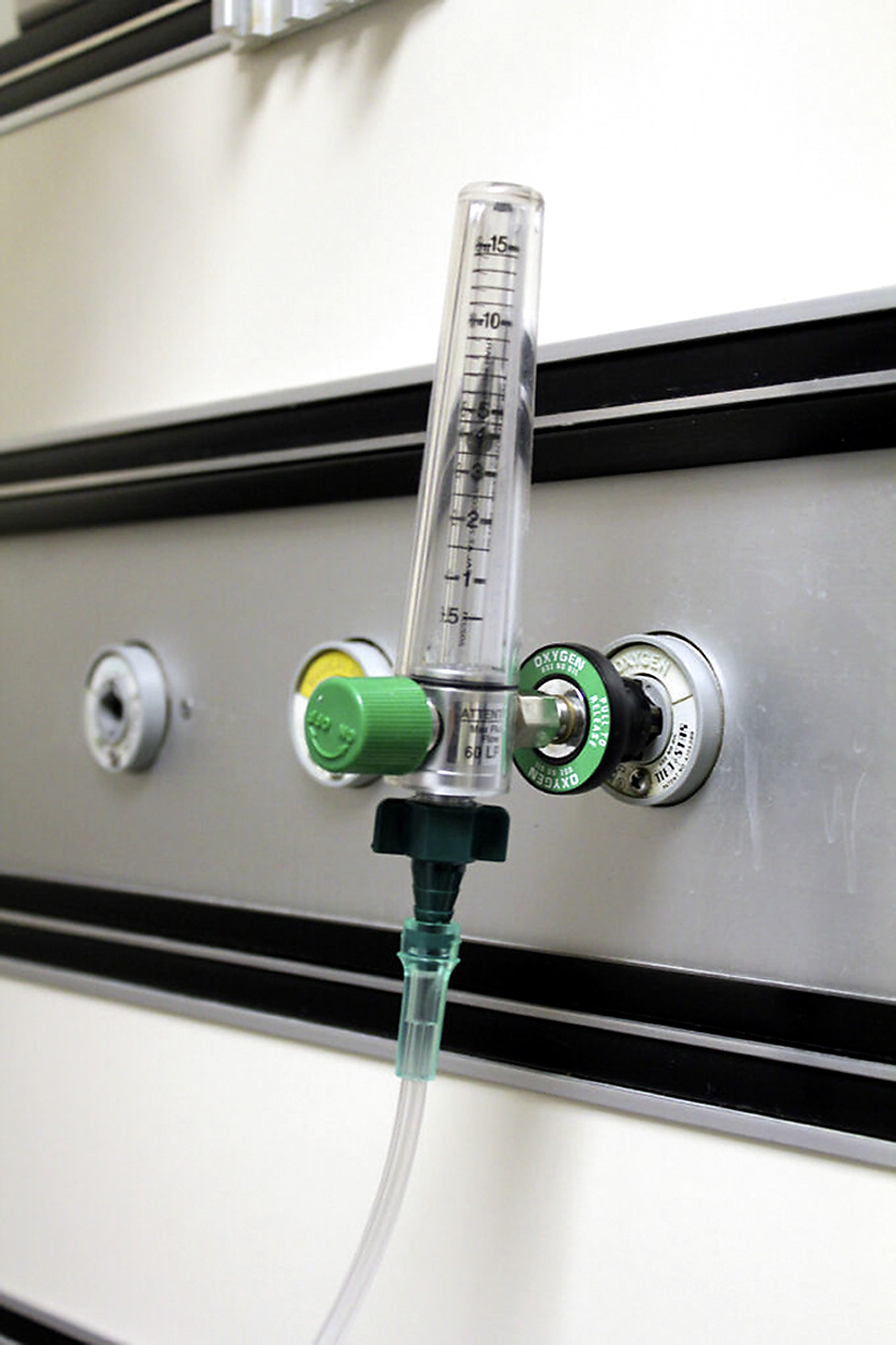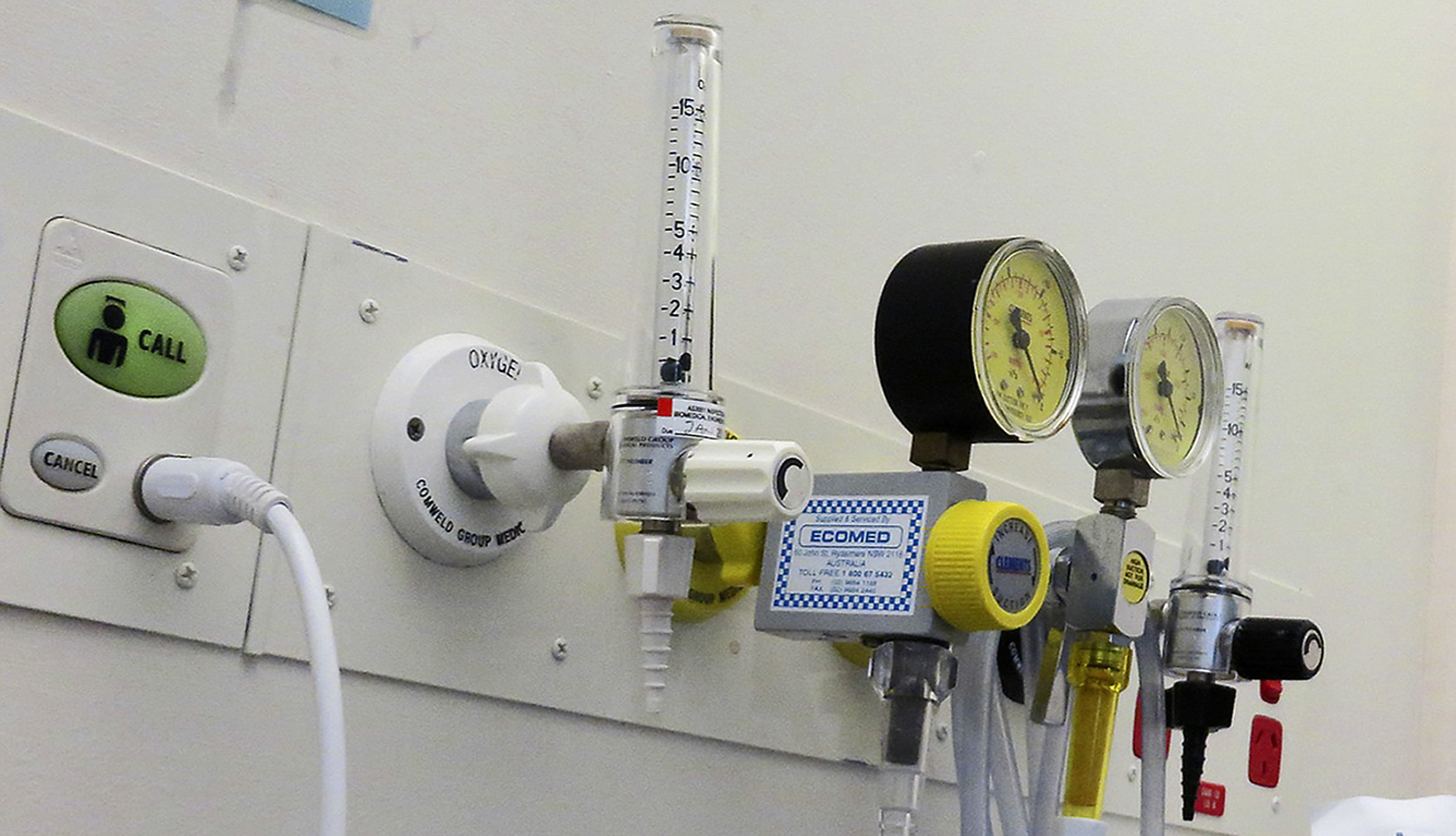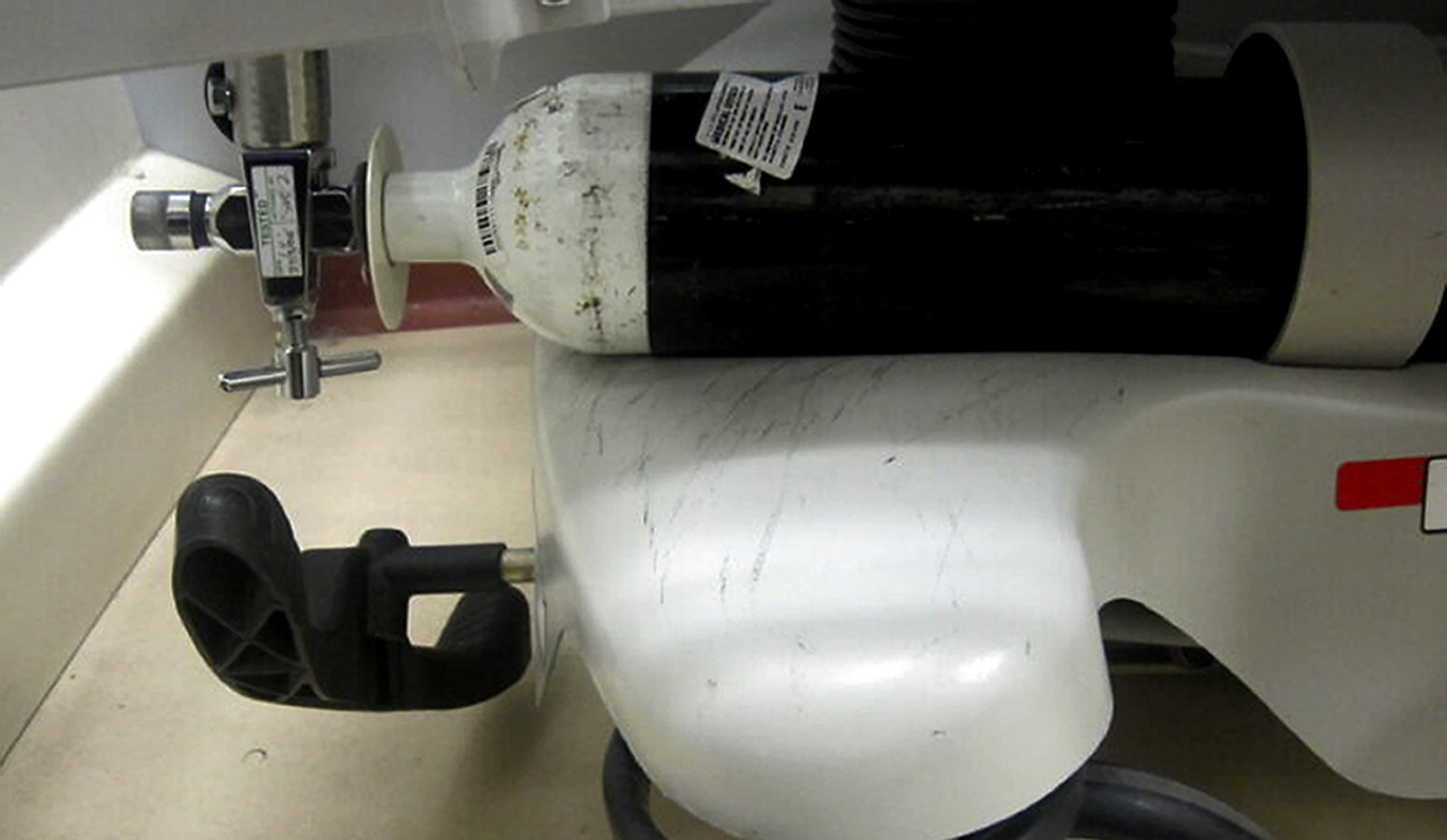SPOTLIGHT
Medical oxygen: The fascinating journey of a life-saving gas

Even in ‘normal’ times, a reliable supply of medical oxygen is an essential part of healthcare services, but during Covid-19 surges, the need for this life-sustaining gas has spiked to unprecedented levels. In hospitals across the country, being hooked up to an oxygen supply has for many made the difference between life and death.
Oxygen is abundantly available in the air around us, but for medical purposes (for example with high-flow nasal oxygen or mechanical ventilation) medical grade oxygen is needed. This means oxygen that is at least 95% pure and meets the SANS532 technical standard.
How is medical oxygen isolated?
To make medical oxygen, oxygen producers take atmospheric air, filter out any dust, and make sure that it is completely desiccated (dried), says Ross Hofmeyr, Associate Professor at the Department of Anaesthesia and Peri-operative Medicine at the University of Cape Town.
“The most common source of medical oxygen is through fractional distillation (a process where air is separated) of the atmospheric air. We are all aware that our atmosphere contains just shy of 21% or about one-fifth oxygen,” he says. “The temperature of that air is decreased close to minus 200 degrees at a pressure of five to 10 atmospheres. That causes the air, mostly containing oxygen and about four-fifths nitrogen – to liquify. And under very controlled conditions the temperature of that liquid oxygen and nitrogen mixture is raised sufficiently that the nitrogen bubbles off, leaving just the oxygen and one or two of the trace elements.”
Hofmeyr says that liquid oxygen is the most efficient way to store large volumes of oxygen – with one litre of liquid oxygen equalling around 840 litres of gaseous oxygen.
Eventually, after being stored and transported, the liquid has to be turned back into a gas that people can breathe.
This is done with vaporisers, explains Mark van der Heever, deputy director of communication at the Department of Health in the Western Cape.
“In order to change phase between liquid and gas, the liquid needs to boil off into a gas and this process requires additional energy which is provided by the vaporiser’s fins which absorb heat energy from the surrounding air,” he says. “The extreme cold of the oxygen liquid causes water condensate in the outside air to freeze when it comes in contact with the vaporiser’s fins or any exposed piping and over time, the ice can build up significantly if not maintained properly. The ice then acts as an insulating layer between the liquid oxygen and the outside air, reducing the capacity of the vaporiser to change liquid oxygen into oxygen gas.”
Van der Heever says in the Western Cape, average oxygen consumption is around 15 litres per minute per patient (with Covid-19) although this can vary wildly depending on treatment type and how the treatment is applied.

Oxygen in a hospital ward. (Photo: Quinn Dombrowski / Flickr / Spotlight)
The setup at hospitals
Transported in bulk tankers, most hospitals use bulk oxygen storage in the form of liquid oxygen and with bulk tank systems, liquid oxygen is delivered and stored in a cryogenic vacuum insulated vessel which helps maintain the very low temperatures.
Hospitals can have piped or non-piped oxygen. Non-piped oxygen is normally in the form of an oxygen trolley which is fitted with a regulator and flow-metres to adjust the flow to the patient. “In this case, no existing infrastructure is required, and this is generally preferred at temporary facilities and at facilities which have a very low normal demand for oxygen,” explains van der Heever.
The piping for bulk and cylinder systems are the same and comprises a larger diameter copper pipe which gets incrementally smaller as the distance from the plant room increases. “The reticulation is often piped in the form of a ‘loop’ where possible with multiple shutoff valves located throughout the facility in order to isolate sections for maintenance or repairs. The pipes are fed to individual service outlets which are used by clinical staff to plug devices into the system as needed,” explains van der Heever.
Keeping up the pressure
According to van der Heever, pressure drops can occur when the flow of oxygen exceeds the capacity of the pipes feeding the system or pressure regulating devices or when there is a shortage of oxygen to feed into the system to maintain pressure.
He says a large pressure drop can occur in one of two ways. The first scenario is when both cylinder banks have almost emptied their respective cylinders and there is very little oxygen remaining in the cylinders. The other scenario is that the total demand for oxygen exceeds the capacity of the pressure regulator or the reticulation system.
“Oxygen is generally supplied at high pressure at the cylinder or bulk tank and then reduced to low pressure for distribution into the reticulation system. The low-pressure side is generally operated at 420 – 550 kPa depending on the reticulation system. When the pressure drops, the amount of oxygen that is delivered to patients can fall below that which is required for the ongoing medical treatment,” explains van der Heever.
He adds that the department experienced minor pressure drops in one of their systems during the first wave of the Covid-19 pandemic due to the increased demand on the vaporiser and had to revert to back-up cylinders. “The problem was resolved shortly after the incident and patients were not affected,” he says. “Possible problems were identified using our data systems and mitigated by de-icing the vaporisers more frequently, referring high-flow patients to facilities with spare bulk oxygen capacity, and increasing the vaporiser size at facilities which were consistently experiencing very high consumption in comparison to their system maximum design capacity.”

Medical oxygen outlets in a ward. (Photo: NewtownGrafitti / Flickr / Spotlight)
Safe handling of oxygen
Van der Heever says the major safety concern with oxygen is that it is highly pressurised like most compressed gasses and the cylinders, therefore, need to be securely stored and transported so it does not fall over and damage the valve on the top of the cylinder.
“Oxygen infrastructure is installed in a secured area away from the public, with only Afrox and trained maintenance personnel having access. [There are] minimum safety distances as stipulated in SANS10260-1. The other safety concern is that oxygen does support combustion, especially in higher concentrations. Leaks directly from cylinders or bulk vessels are exceptionally rare due to the stringent regulatory inspection and testing they undergo,” he explains, adding that leaks from oxygen pipes are not common but can happen if the pipes are disturbed, such as during construction or maintenance.
“When a new oxygen system is installed, it is pressure tested for 24 hours to ensure there are no leaks before the system is commissioned and this is repeated whenever a new section is added to the system. Wards and areas undergoing major maintenance are normally isolated from the oxygen reticulation system for the duration of construction. When a leak occurs, it is normally picked up while the area is still empty during the pressure testing and corrected quickly in order to complete a successful test,” says van der Heever explaining that oxygen points can also leak due to wear and tear and this is normally reported to the engineering workshops who have qualified staff and parts to service and repair any problems which do come up.
Who are the suppliers
The Western Cape government gets its medical oxygen from Africa Oxygen Ltd (Afrox) in terms of a contract administered by National Treasury. The relevant tender makes provision for different suppliers to supply medical oxygen in different parts of the country. Afrox’s main competitor in the local medical oxygen market is the company Air Liquide.
Afrox is a subsidiary of the Linde Group. An article recently published in The Guardian contained allegations that there is a lack of competition in the market for medical oxygen in some African countries and that the Linde Group and Air Liquide are overcharging clients on the continent.
When asked if there is enough competition in the market, van der Heever says there is a fair amount of competition between the two largest suppliers but even so, due to the vast distances covered and the impracticality of transporting oxygen over very long distances, the suppliers’ price fluctuates and longer distances mean higher prices.
“The rates depend on the delivery method but in-bulk the cost is currently R10.04/kg of condensed oxygen in the Western Cape. Deliveries and logistics are managed by the Afrox delivery team for both bulk and cylinder supply. Cylinders, as well as bulk tanks, are rented from the supplier,” he says, explaining that this is in part due to regulatory requirements for testing and certification of these pressurised vessels.
Cylinders are delivered to site by Afrox, and they also remove the empty cylinders for refilling and redistribution. Once empty cylinders are removed, they are pressure tested if necessary, refilled and redistributed to a new facility.
Air Liquide says they produce medical oxygen at five plants in South Africa and that the frequency of deliveries depends on demand from hospitals. “Some hospitals we used to supply once a week are now supplied daily,” says the company.

An oxygen tank. (Photo: eltpics / Flickr / Spotlight)
Meeting the surge in demand
As Covid-19 infections and hospitalisations surged in South Africa, first in mid-2020 and then again at the end of the year, so did the need for medical oxygen.
The Western Cape Department of Health’s average oxygen consumption per day pre-Covid-19 was approximately 12.2 tons per day. During the peak of the first wave consumption was approximately 35 tons per day and during the peak of the second wave consumption was at 62.2 tons per day. Van der Heever says this excludes the use in private sector hospitals and other industries that also use oxygen such as pharmaceuticals, clinics and emergency medical services.
“Our current consumption is getting lower daily and is currently already less than the first wave. In relation to our peak consumption, we therefore currently have more than 50% spare capacity. Current Covid-19-related oxygen consumption is estimated at around 17.8 ton per day,” says van der Heever.
As demand for medical oxygen spiked in the country, Air Liquide and Afrox both took steps to prioritise the supply of medical oxygen. Air Liquide explains that with the necessary re-allocation of their supply chain resources to prioritise hospitals, they sent their industrial clients a “Notice of Force Majeure” to inform them of a possible interruption of oxygen deliveries.
Van der Heever says the province experienced two major challenges as demand spiked. “The first challenge was the sheer volume of oxygen being consumed. The total volume we required in the Western Cape exceeded the total volume that the Afrox Epping plant could produce. Afrox initially started trucking in oxygen for the Garden Route facilities from the Port Elizabeth plant to avoid having to supply these facilities from the Epping plant, and this was sufficient for a few weeks. Later, during the highest demand period, there were also supplemental deliveries from other plants and three additional bulk tanker trucks which help fill the facility bulk tanks.
But the largest challenge van der Heever says was the high turnover of cylinders, especially at rural facilities. This was because the overall throughput was so high and the supply of empty cylinders became an issue since the Epping plant would have to stop filling cylinders and wait for new empty ones to come in, even though they had sufficient oxygen ready to go.
“This was mitigated by firstly monitoring the number of empty cylinders daily via the dashboard (an internal departmental dashboard) and directing in-house transport to collect the cylinders where there was a significant amount. Afrox has also ordered a large number of additional cylinders and converted cylinders for industrial customers for oxygen,” he says.
Spotlight sent questions to Afrox, but did not receive responses by the time of publication. DM/MC
This article was published by Spotlight – health journalism in the public interest. Sign up for our newsletter.
Information pertaining to Covid-19, vaccines, how to control the spread of the virus and potential treatments is ever-changing. Under the South African Disaster Management Act Regulation 11(5)(c) it is prohibited to publish information through any medium with the intention to deceive people on government measures to address Covid-19. We are therefore disabling the comment section on this article in order to protect both the commenting member and ourselves from potential liability. Should you have additional information that you think we should know, please email [email protected]
"Information pertaining to Covid-19, vaccines, how to control the spread of the virus and potential treatments is ever-changing. Under the South African Disaster Management Act Regulation 11(5)(c) it is prohibited to publish information through any medium with the intention to deceive people on government measures to address COVID-19. We are therefore disabling the comment section on this article in order to protect both the commenting member and ourselves from potential liability. Should you have additional information that you think we should know, please email [email protected]"




 Become an Insider
Become an Insider